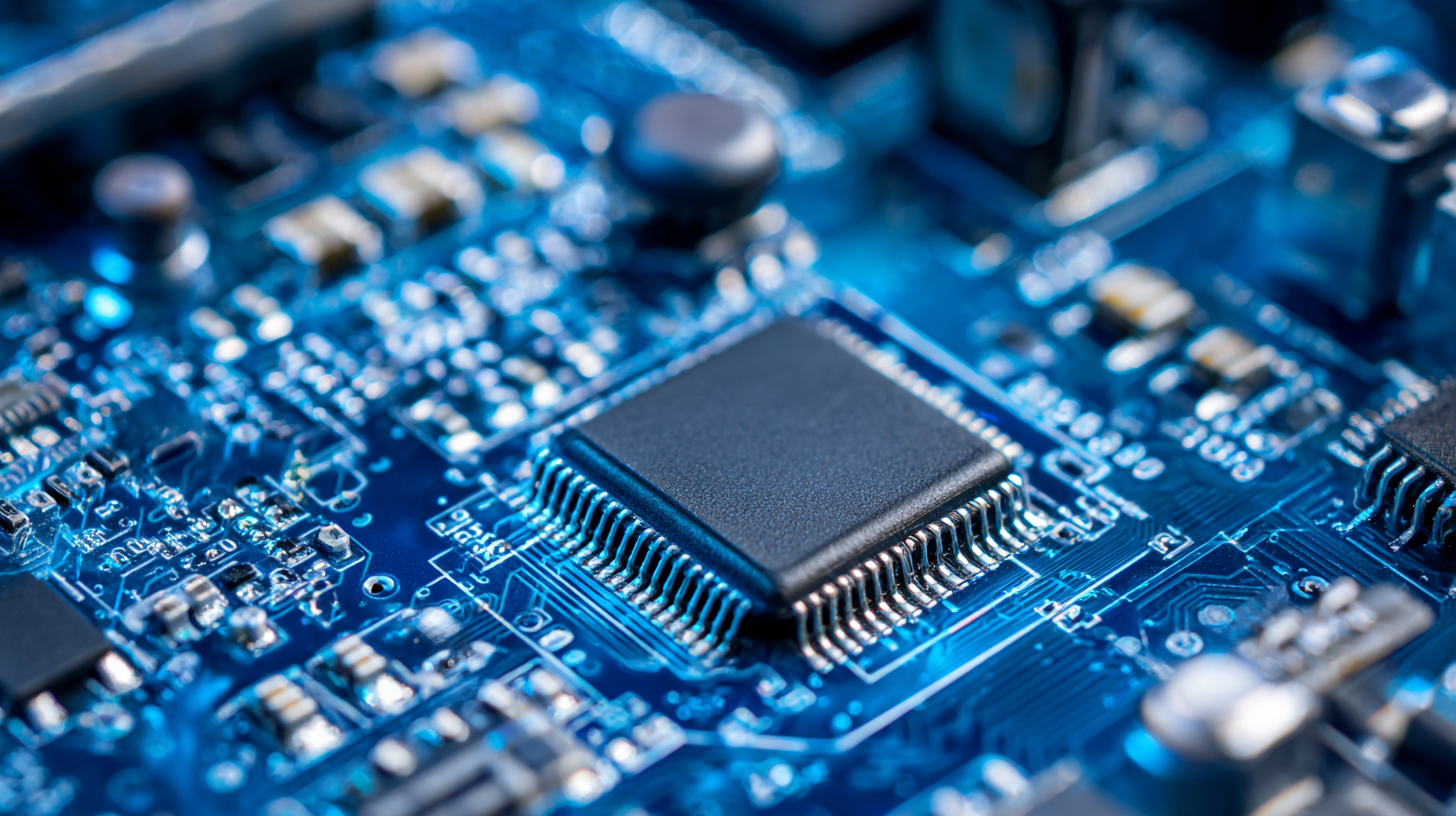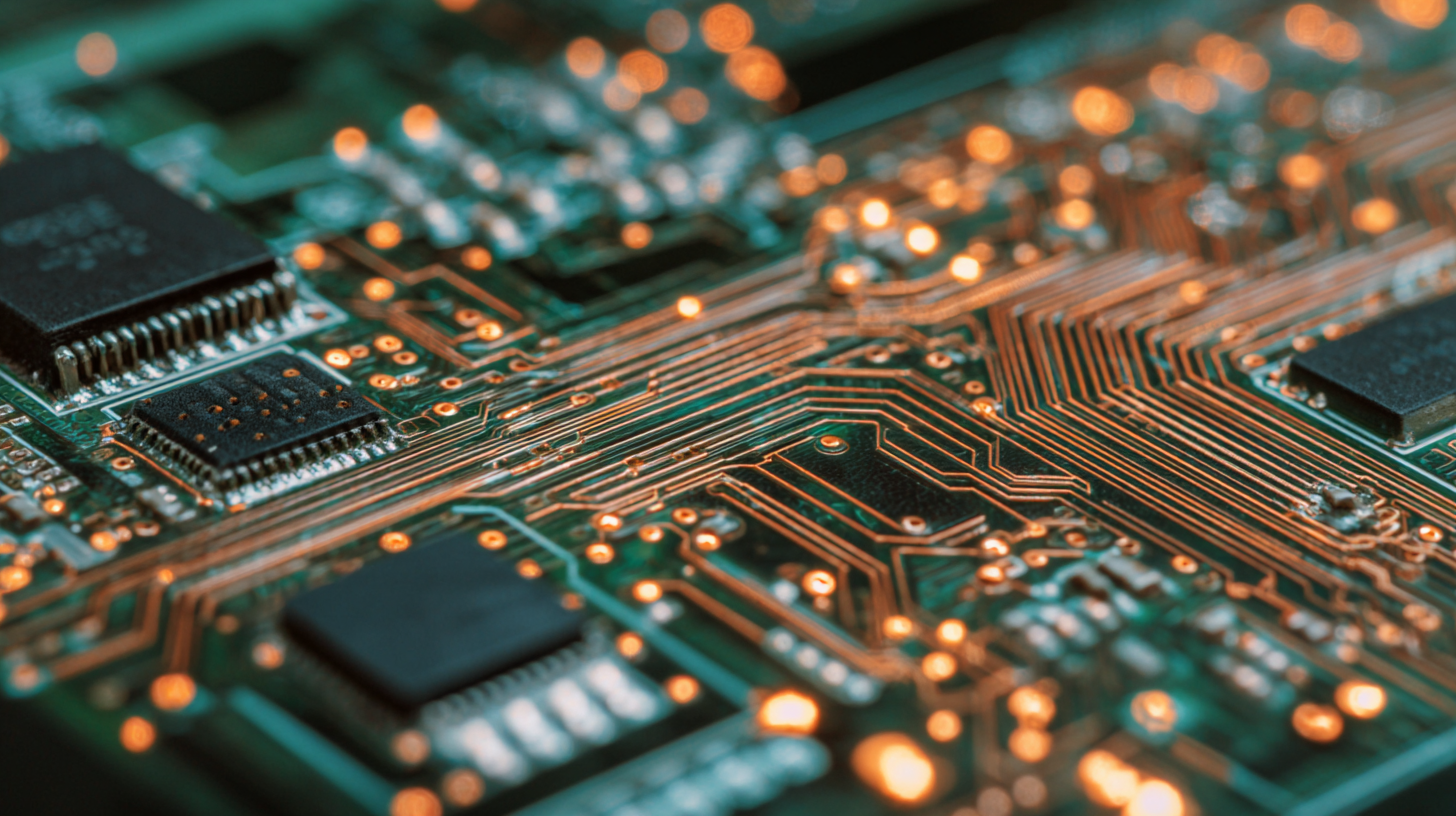As we approach 2025, the landscape of PCB production is evolving rapidly, driven by technological advancements and shifting market demands. According to a report by MarketsandMarkets, the global PCB market is projected to reach $81.34 billion by 2025, highlighting a compound annual growth rate (CAGR) of 4.4% from 2020. This growth underscores the increasing reliance on printed circuit boards across various sectors, including consumer electronics, automotive, and industrial applications.

In this dynamic environment, optimizing sourcing strategies has become crucial for manufacturers aiming to leverage the benefits of high-quality production while navigating challenges such as supply chain disruptions and rising costs. This blog will explore the latest trends in PCB production and provide insights on how to enhance sourcing strategies effectively, establishing China as a premier global partner in quality manufacturing.
As we look towards 2025, the landscape of printed circuit board (PCB) production is being shaped by several key trends. One major focus is the increasing demand for miniaturization and high-density interconnects (HDI). According to a report by IPC, the global PCB market is projected to reach $83 billion by 2025, driven partly by the growth of consumer electronics and IoT devices. This heightened demand necessitates advanced manufacturing processes that can accommodate smaller, more intricate designs without compromising quality.

Another trend is the shift towards sustainable practices in PCB production. A study by ResearchAndMarkets indicates that eco-friendly materials and production processes are becoming a priority for manufacturers, particularly in response to environmental regulations and consumer demand for greener products. Innovations like lead-free solder and recyclable substrates are not just trends but necessities for staying competitive in the PCB market. Companies that optimize their sourcing strategies to include these sustainable practices will have a significant advantage in meeting regulatory requirements and satisfying environmentally-conscious customers.
The PCB industry is on the brink of transformative changes in 2025, driven by various market drivers that are reshaping production strategies. According to a recent report from MarketsandMarkets, the global PCB market is projected to reach $81.84 billion by 2025, fueled by advancements in IoT, automotive electronics, and 5G technologies. As the demand for high-frequency and multilayer boards increases, manufacturers must adapt their sourcing strategies to stay competitive.
To optimize sourcing strategies in this evolving landscape, companies should focus on diversification and strategic partnerships. While traditional sourcing from established regions remains crucial, exploring emerging markets like Southeast Asia can lead to cost-effective solutions and access to innovative technologies. Additionally, leveraging data analytics and supply chain transparency can enhance decision-making and mitigate risks associated with fluctuations in component availability.
Tip 1: Assess your supplier's ability to meet new technology demands. Evaluate their R&D capabilities to ensure they can keep pace with the rapid evolution of PCB design and manufacturing.
Tip 2: Embrace sustainability in sourcing. With regulatory pressures increasing around eco-friendly production, aligning with suppliers who prioritize green manufacturing processes can not only mitigate compliance risks but also appeal to environmentally conscious consumers.

In 2025, optimizing sourcing strategies is crucial as businesses navigate an increasingly complex global supply chain landscape. A key approach involves leveraging global supplier networks effectively, especially through the integration of advanced technologies like AI and analytics. These innovations are transforming procurement from a traditional transactional function into a strategic powerhouse capable of driving value and enhancing decision-making. By employing data-driven insights, organizations can identify the most reliable suppliers while mitigating risks associated with global disruptions.
Additionally, the recent emphasis on local sourcing highlights the benefits of minimizing supply chain distances and fostering collaborative partnerships. This strategy not only reduces the impact of tariffs and trade uncertainties but also enhances resilience against global disruptions, as seen during the COVID-19 pandemic. By prioritizing a diverse range of suppliers and integrating digital procurement solutions, companies can balance stakeholder priorities while ensuring a steady and efficient flow of materials. Embracing these trends will prove essential for businesses looking to thrive in a rapidly evolving market landscape.
As industries brace for the transformative wave of Industry 4.0 by 2025, the push for sustainability in printed circuit board (PCB) production becomes a critical focus. Companies are increasingly aware that eco-friendly manufacturing processes not only meet regulatory standards but also enhance brand reputation and consumer trust. Innovative materials, such as biodegradable substrates and lead-free solder, are gaining traction, helping manufacturers reduce waste and lower their carbon footprint. By embracing these sustainable practices, PCB producers can attract environmentally conscious customers and stay competitive in a rapidly evolving market.
Moreover, integrating smart technologies into the PCB production process fosters greater efficiency and resource management. Techniques such as IoT-enabled monitoring systems allow for real-time data analysis, optimizing material usage and minimizing excess waste. These advancements not only contribute to sustainability goals but also align with the overarching objectives of Industry 4.0, where automation, data exchange, and improved supply chain visibility are paramount. As manufacturers prioritize sustainability in their sourcing strategies, they must consider not only the economic benefits but also the long-term positive impact on the environment and society at large.
As we move into 2025, the landscape of PCB manufacturing is being reshaped by rapid technological advancements. Innovations such as AI-driven design tools, advanced materials like flexible and printed circuit boards, and the integration of automation in production processes are enhancing efficiency and reducing lead times. These trends not only improve the quality of PCBs but also enable manufacturers to meet the ever-increasing demands for smaller, more complex designs.
**Tip:** Embrace automation in your manufacturing processes. Investing in robotics and AI can streamline production lines, minimize human error, and ultimately lead to cost savings.
Moreover, sustainable practices are gaining traction in the industry. Manufacturers are focusing on eco-friendly materials and waste reduction measures, which not only appeal to environmentally conscious consumers but also comply with stricter regulations. This shift requires sourcing strategies to adapt, ensuring that suppliers align with sustainability goals.
**Tip:** Develop a supplier assessment framework that includes sustainability criteria. This will help in selecting partners who share your commitment to the environment, enhancing your brand's reputation while fostering long-term relationships in the supply chain.
| Trend | Description | Impact on Sourcing | Recommended Action |
|---|---|---|---|
| AI-Driven Design | Utilizing artificial intelligence to enhance PCB design efficiency. | Reduces time and costs in design phase. | Invest in AI software tools. |
| Flexible PCBs | Increasing use of flexible printed circuit boards in various applications. | Wider supplier base needed for flexible materials. | Research and partner with flexible PCB manufacturers. |
| IoT Integration | Integration of PCBs with Internet of Things devices. | Increased demand for communication-ready PCBs. | Focus on suppliers experienced in IoT solutions. |
| Sustainability Practices | Adopting eco-friendly materials and processes. | Potential regulatory compliance costs. | Audit current suppliers' sustainability practices. |
| Advanced Materials | Utilization of high-performance materials for PCBs. | Higher initial costs with longer lifespan benefits. | Evaluate cost-benefit of advanced materials. |
Address :
Absolute Electronics Services LLC
330 W Fay Ave
Addison, IL – 60101
2025 Absolute Electronics Services, All Rights Reserved